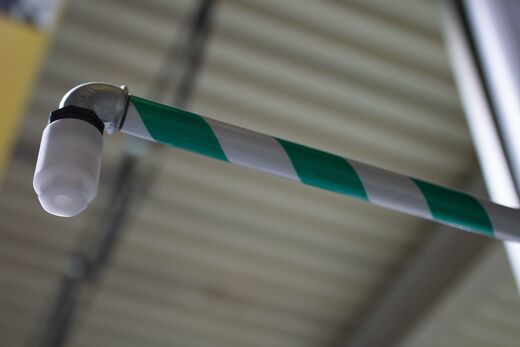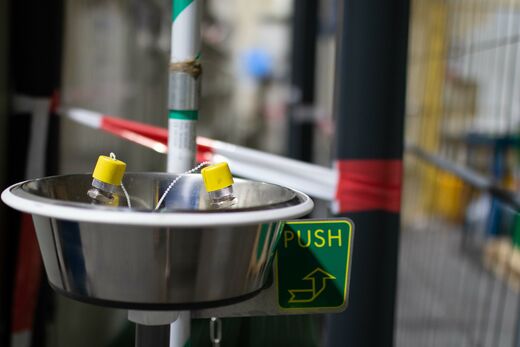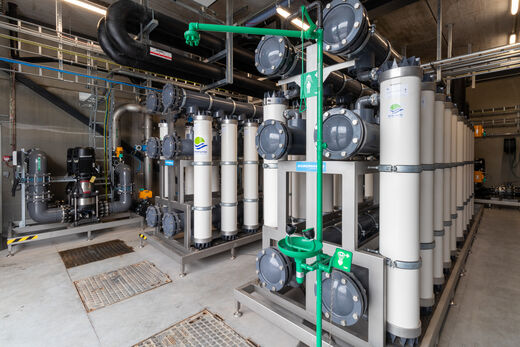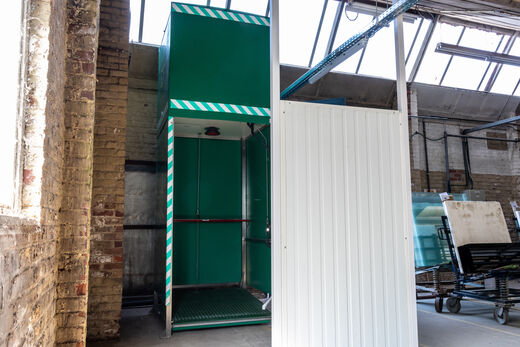Emergency showers legislation

All workplaces where there is a risk of coming into contact with hazardous substances, even in small quantities, must be equipped with an emergency shower and/or eye wash. These hazardous substances can be acids or bases, but solids (dust, powder) can also be a hazard.
Emergency showers and eye showers are needed in a variety of sectors:
- Commercial kitchens - kitchens, steel smelters, glass smelters, ...
- Chemical industry, process industries, laboratories, ...
- All industries related to hazardous substances: paper industry (bleaching), textiles, surface treatment (stains - degreasing liquids), laundries, ...
- Wood industry, concrete industry, dyeing, food, ...

Dangerous substance in eye / on skin
Does a chemical or hazardous substance come into contact with the skin or eyes? Then it is important to rinse the affected areas profusely with water as soon as possible. This way, you avoid and limit injuries such as (chemical) burns. The quickest and easiest solution for this is with an emergency shower or eye wash. Our emergency showers and eye wash comply with current legislation.
Besides purchase and delivery, CGK also provides installation and maintenance of eye wash and emergency showers.
Eye wash : how to use them?
- Activate the eye shower using the lever.
- Bend over the eye wash and place the eyes over the nozzles.
- Rinse the eyes for at least 15 minutes.
European standard
The five-part European standard EN 15154 concerns safety emergency showers. The standard imposes certain requirements regarding shower design, shower flow rate, eye jet height, flushing time, water spread ...
This standard requires a flow rate of 60 litres per minute for body showers and 6 litres per minute for eye wash. The water temperature is not prescribed but recommended between 15° and 37° Celsius.
- > 37 °C: risk of harmful interaction of the chemicals with eyes/skin
- < 15 °C: risk of cooling effect - hypothermia
Our showers conform to this European standard.

Where should I place my emergency shower?
- Place the emergency shower and eye wash within 10 seconds or a maximum 30-metre walk from the risk zone, for strong acids and corrosive substances a maximum of 3 metres from the risk zone.
- Install the emergency shower and eye wash in an easily accessible place and not above corridors, doors, stairs and in escape routes
- Emergency shower and eye wash must be provided with correct, highly visible signage and with marking of a universal recognition sign.

How should I install my emergency shower?
- Preferably install the emergency shower/eye wash on a (flowing) water supply network.
- We recommend connecting the emergency shower/eye wash to an alarm system so that a signal is given when it is used. This can be done, for example, using a flow switch
- When rinsing the eyes, both hands should be free to spread the eyelids.
- Protect your outdoor setup from frost.
Need emergency shower(s)?
Leave your details and get all the info you need.
Tips & regulations
Tips emergency showers and eye washes
- Organise internal drills so that every employee knows the location of eye washes and/or emergency showers.
- Together with a medical professional, determine the ideal temperature (usually lukewarm water, but some situations require colder or warmer temperatures).
